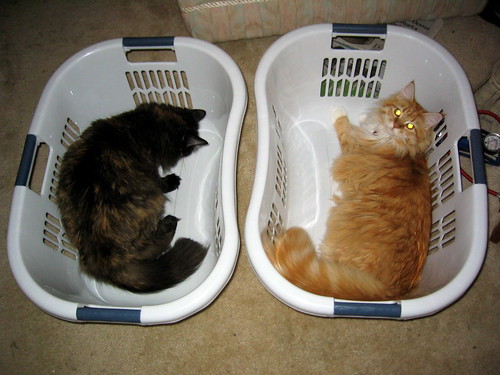Thinking about adding a new cat to your family? While it’s exciting to bring home a new furry friend, introducing cats to each other can be a delicate process, especially if you already have a resident cat. Cats are territorial creatures, and a poorly executed introduction can lead to stress, aggression, or long-term tension. If done correctly, however, you can pave the way for a positive relationship between your cats.
Here’s a step-by-step guide to teach you how to introduce cats in a calm and structured way, ensuring their first impressions are pleasant and stress-free.
Benefits of Having One Cat
Owning a single cat comes with numerous advantages, making it a rewarding experience for many pet owners. Here are some key benefits of living with just one feline companion:
- Undivided Attention: With only one cat at home, you can dedicate all your time and attention to your furry friend. This focused care allows you to better understand their personality, needs, and preferences, leading to a stronger bond and a more enriching relationship.
- Simpler Care Routine: Caring for one cat is generally more manageable. Feeding, grooming, and vet visits are more straightforward when there’s only one pet to look after. You’ll also have fewer concerns about intercat dynamics or ensuring there are enough shared resources.
- Reduced Costs: From food to litter and medical expenses, the cost of maintaining one cat is significantly lower compared to owning multiple pets. This financial relief can mean providing higher-quality products and care for your solo feline.
- Stress-Free Environment: Some cats thrive in a calm and peaceful environment without having to share their space with other animals. A single-cat household can help reduce stress for both you and your pet, especially if your cat prefers solitude.
- Personalized Playtime: One-on-one play sessions not only entertain your cat but also help them stay mentally stimulated and active. You can easily tailor activities to their specific preferences, making playtime more engaging and fun.
Having one cat is perfect for households that want a close connection with their pet while keeping things simple and stress-free. It allows your feline companion to flourish with undivided love and care.
Benefits of Having Not Only One Cat But… Two Cats!
- Companionship for Each Other: When you have two cats, they can keep each other company, especially when you’re not at home. Cats are social creatures, and having a companion can help reduce loneliness and stress, as they can play, groom, and bond with one another.
- Encourages Physical Activity: Two cats are often more active together than a single cat on their own. They tend to chase, wrestle, and explore their environment together, which helps them stay physically and mentally stimulated, reducing the chances of boredom or destructive behavior.
- Easier Socialization: Having two cats can improve their social skills and behavior, as they learn from one another. This is especially helpful if you have a kitten because an older cat can teach the younger one boundaries, grooming habits, and how to interact.
- Double the Love and Personality: With two cats, you get the joy of experiencing two unique personalities. Each cat brings their distinct quirks and traits, adding more fun and excitement to your household. Plus, there’s twice as much affection and cuddles to go around.
- Minimizes Separation Anxiety: Two cats are less likely to develop separation anxiety as they have each other for comfort and security. This is particularly beneficial for cats that struggle with being alone for long periods.
Bringing two cats into your home can create a lively, mutually enriching environment and ensure a happier, healthier life for both your feline friends.
Setting the Stage for Success
Before introducing your cats, preparation is key. Cats thrive in environments where they feel secure, so setting up a safe, controlled foundation will make the introduction process smoother for everyone involved.
Prepare a Separate Room for the New Cat
Create a safe haven for your new kitty by designating a separate room. This will allow your new cat to adjust to the sounds, smells, and environment of your home without feeling overwhelmed. Your new cat’s room should include:
- A litter box placed in a quiet spot.
- Food and water bowls positioned away from the litter box.
- Comfortable hiding spots away from other cats, such as a cat tree, soft bed, or safe corners.
- Scratching posts and toys for playtime and relaxation.
This room acts as a buffer, giving the new cat time to feel secure while your existing cat remains calm in their usual space.
Maintain a Routine for Both Cats
Cats are creatures of habit, so sudden changes to their routines can cause stress. Keep feeding schedules, play sessions, and other activities consistent for your resident cat while ensuring you also spend time with the new cat. Gradually, both cats will feel more comfortable knowing that their needs are met.
The Step-by-Step Introduction Process
Introducing cats should be a slow and steady process. Don’t rush it, even if one cat seems eager; patience is crucial to forming a positive relationship between your pets.
Step 1. Exchange Scents
Before the cats meet face-to-face, allow them to get familiar with each other’s scent. Cats rely heavily on smell, and a shared scent fosters a sense of familiarity.
- Use a soft cloth to gently rub one cat’s cheeks and then place the cloth near the other cat’s space. Repeat this with both cats, exchanging scents multiple times over several days.
- You can also swap bedding, scratching posts, or toys between the cats to help them learn each other’s scent passively.
Monitor their reactions. If either cat shows signs of stress, like flattening their ears or pacing, go slower.
Step 2. Gradual Visual Introduction
Once both cats are relaxed with the scent exchange, it’s time for a controlled visual meeting. Start by letting them see each other through a barrier, such as:
- A cracked door where they can peek at each other.
- A baby gate or screen door offering a clear view but maintaining physical separation.
During this stage, observe their body language. If both cats remain curious and calm, reward them with treats and positive reinforcement. If one of the cats shows signs of aggression or fear, redirect them with interactive play and try again later.
Step 3. Short Supervised Meetings
When your cats appear relaxed during visual introductions, it’s time to move to short supervised face-to-face meetings. Bring the cats into a neutral space and engage them in separate activities, such as eating treats, playing with toys, or exploring scratching posts. Keep these sessions brief, lasting no longer than 5–10 minutes.
Supervision is critical at this stage. If the cats become tense or aggressive, separate them immediately and resume visual-only meetings.
Step 4. Gradually Increase Interaction
Over time, increase the length and frequency of these face-to-face meetings. Continue encouraging positive associations by offering treats, toys, and interactive play during these sessions.
Look for signs of mutual relaxation, such as:
- Loose, calm body language.
- Cats eating or playing in each other’s presence.
- Lack of defensive cues, such as flattened ears or growling.
Step 5. Monitor Shared Spaces
Once the cats are comfortable spending time together under supervision, allow them more freedom to interact in shared spaces. Ensure there are plenty of resources (like food bowls, water bowls, and litter boxes) to prevent competition.
Observe their behavior during these unsupervised interactions. If any issues arise, temporarily revert to an earlier stage of the process and progress more gradually.
Tips for a Smooth Introduction
- Don’t force interactions: Allow the cats to approach each other and explore at their own pace. Pushing them together can create a negative association.
- Provide escape routes: Ensure that each cat has a way to retreat if they feel uncomfortable.
- Create vertical spaces: Cat trees, shelves, or perches give cats the ability to observe each other from a distance, reducing tension.
- Use positive reinforcement: Reward calm, relaxed behavior with treats and praise to encourage a positive connection.
Understanding Cat Behavior During Introductions
Pay close attention to your cats’ body language, as it will provide valuable clues about how they’re handling the introduction process. Here’s what to look for:
Signs of Relaxation
- Ears are forward.
- Tail is upright or gently swaying.
- Cats are eating, grooming, or playing.
Signs of Stress or Aggression
- Ears flattened against the head.
- Hissing, growling, or swatting.
- Arched backs and puffed tails.
If you notice signs of stress, separate the cats and wait before trying again.
When to Get Help
Introducing cats can be challenging, especially in households with multiple cats or particularly territorial cats. If your introduction process isn’t going smoothly, consider consulting a veterinarian or animal behaviorist. They can provide tailored advice to help create a harmonious home for your feline companions.
Kate’s K9 Pet Care is here for all your cat-sitting needs. Contact us today!

Helpful Resources for Introducing a New Cat to Your Current Cat
Here are six resources to guide you through the process of introducing a new cat to your existing feline companion:
- ASPCA – Introducing Your New Cat to Other Cats: The ASPCA provides step-by-step advice on easing the transition for both your new and current cats. https://www.aspca.org/pet-care/cat-care/common-cat-behavior-issues/introducing-your-new-cat-other-cats
- Jackson Galaxy – How to Introduce Cats: Renowned cat behaviorist Jackson Galaxy shares detailed tips on creating a positive and stress-free introduction. https://www.jacksongalaxy.com/blog/how-to-introduce-cats
- The Humane Society – Introducing Cats to Each Other: This resource focuses on gradual introductions to ensure a harmonious relationship between your cats.https://www.humanesociety.org/resources/introducing-cats-each-other
- Paws – Cat-to-Cat Introductions: Paws provides helpful insights into understanding feline behavior during introductions and how to manage potential challenges. https://www.paws.org/resources/cat-to-cat-introductions/
- International Cat Care – Introducing a New Cat to Your Resident Cat: This resource offers expert-approved guidance for a smooth integration process. https://icatcare.org/advice/introducing-a-new-cat-to-your-resident-cat/
- Pet WebMD – How to Introduce a New Cat to Your Home and Cats: WebMD covers key steps and troubleshooting tips for introducing your new furry family member. https://pets.webmd.com/cats/introducing-new-cat-to-home
Helping Your Cats Thrive in a Multicat Home
Introducing a new cat is just the beginning of building a positive relationship between your pets. Once the introduction process is complete, continue nurturing their bond by:
- Playing with them simultaneously to encourage cooperation and shared experiences.
- Ensuring each cat has access to their own resources, such as scratching posts, litter boxes, and resting spots.
- Spending one-on-one time with each cat to strengthen your individual connections.
With patience, positive reinforcement, and careful attention, your cats can learn to coexist peacefully and even enjoy each other’s company.








